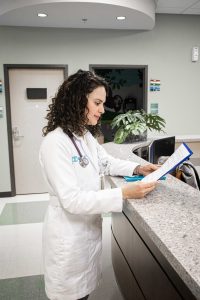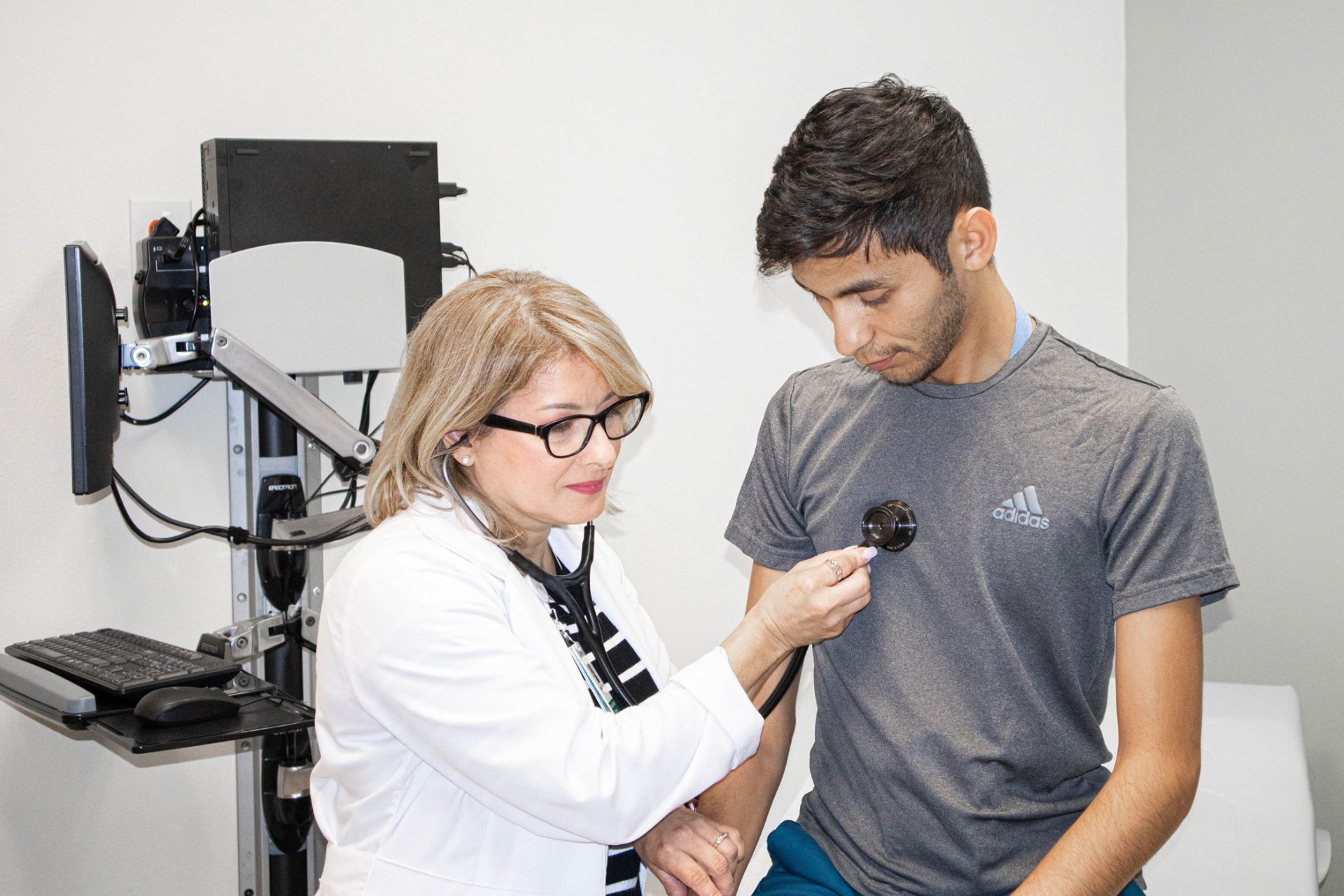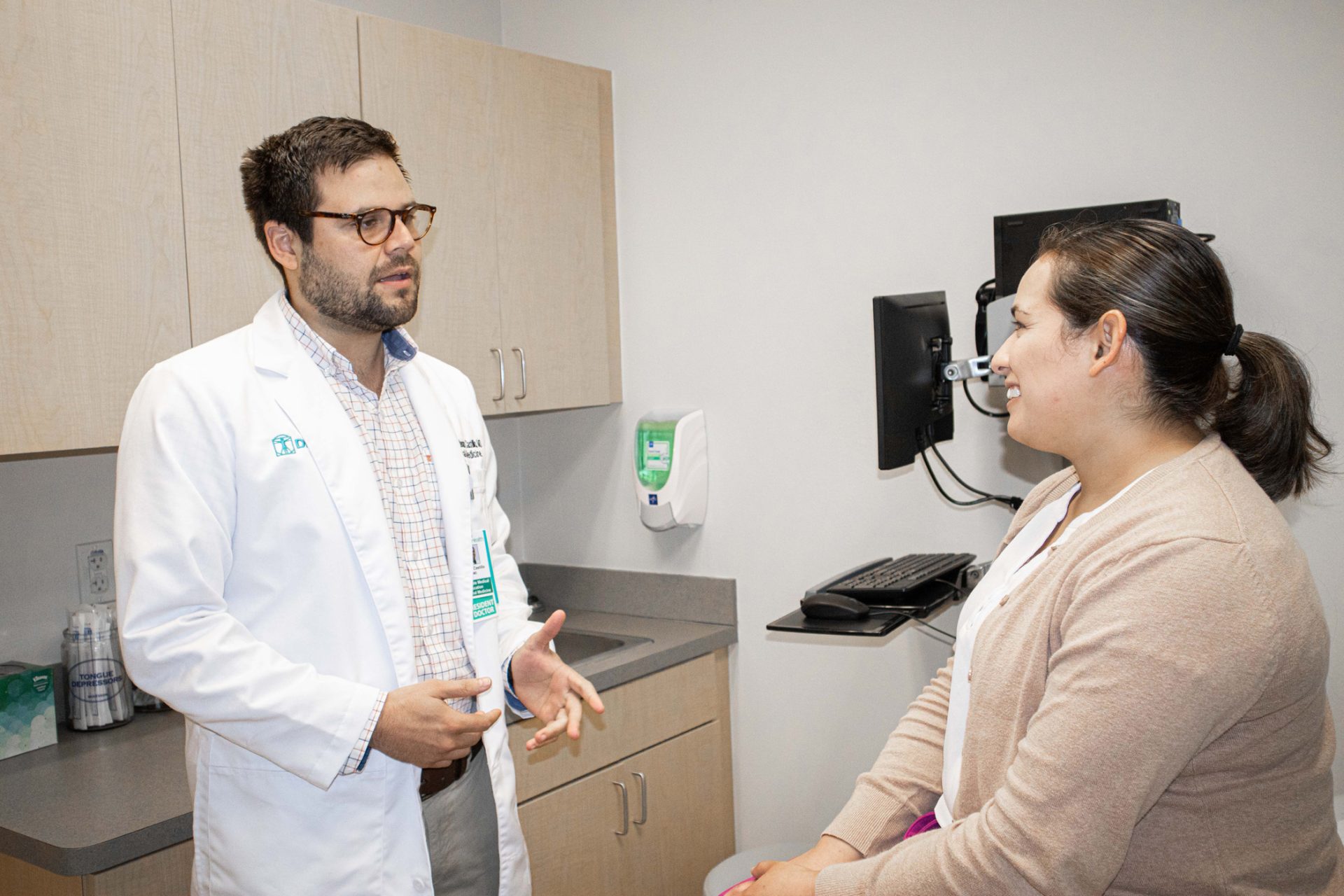|
Only have a minute? Listen instead
Getting your Trinity Audio player ready...
|

Amid a healthcare worker shortage, DHR Health is celebrating its recent hiring of 47 new physician residents as part of its inaugural Graduate Medical Education programs, or GME.
The residents, who began work on June 19, are recent graduates of medical schools and hail from across the world. They’ll be continuing their education as physicians in the area, and will be trained in various specialties including internal medicine, general surgery, urology, diagnostic radiology, family medicine and emergency medicine.
DHR’s board chair and chief executive officer — Dr. Carlos J. Cardenas and Dr. Manish Singh, respectively — expressed enthusiasm about the residents and the program in a news release.
Cardenas said the residents will “play a pivotal role in further enhancing the quality and scope of medical services” at DHR while Singh said they’ll “benefit from our state-of-the-art facilities.”
It couldn’t come at a more critical time for the region as the Rio Grande Valley grapples with a nationwide doctor and nursing shortage.
In May, local hospital systems said they’re addressing those challenges by relying on recruitment and strengthening partnerships with area school districts and higher education institutions to create career pathways for the medical field in the Valley.
Dr. Jessica Martin, DHR’s senior vice president of medical education, serves as the designated institution official for GME and said the program considers the likelihood of staying in the region when awarding a residency.
“One of the things we think about when we are looking to fill a residency is whether they fit the culture. Are they Spanish speaking … and of course if they’re from the Rio Grande Valley would they stay?” Martin said Wednesday. “So factors like that are definitely considered as well as other factors, like how they did in medical school. But also, do they have a desire to contribute to public health, border health, and if they’re a fit for our culture and if we’re a fit for them.”

This appears to be true at least for Dr. Alexis Garza, a Valley native and GME program urology resident who’s glad to be giving back to her community.
“DHR Health has helped me and my family since I was little, and I always wanted to be a doctor since I was small,” Garza said in the release. “As a new physician, my goal is to help bolster the medical infrastructure for the Valley. I am happy to be at DHR Health, as they are the leading institution offering a variety of medical specialties.”
Among the other residents is Dr. Rafael Cardenas Castillo, an internal medicine resident from Venezuela who is also excited to continue his medical education in the Valley.
“Already, the Valley looks like a great place to start a family,” Castillo said in the release. “It is very family oriented, and everyone is very welcoming, from the management and staff at DHR Health to the people we meet in the community.”
Starting a family in the Valley is one of the factors Martin said young medical professionals consider when deciding where they’ll work.
“They’re in their early 30s, and so being that young they might meet someone, start a family…” Martin said. “I think the statistics show why they are the way they are, and we’ve already seen that. DHR has been a primary physician site and we’ve seen that same 60%.”

Martin was referring to internal data showing that 60% of residents stay within 50 miles of where they train, which is also often due to the duration of their residencies lasting anywhere from three to five years.
“For us, it’s a very exciting time here in the Rio Grande Valley because we are bringing Graduate Medical Education here to the Valley, to our underserved communities and to our population,” Martin added. “We’re not only contributing to our economy but to quality patient care so our community doesn’t have to travel long distances or leave the Valley.”
A Peru native, emergency medicine resident Dr. Luis Pantoja has lived in South Texas since his high school years and said in the release that he’s “glad to be a resident with DHR Health.”
“It’s important to stay humble and always remember where you came from,” Pantoja said.



